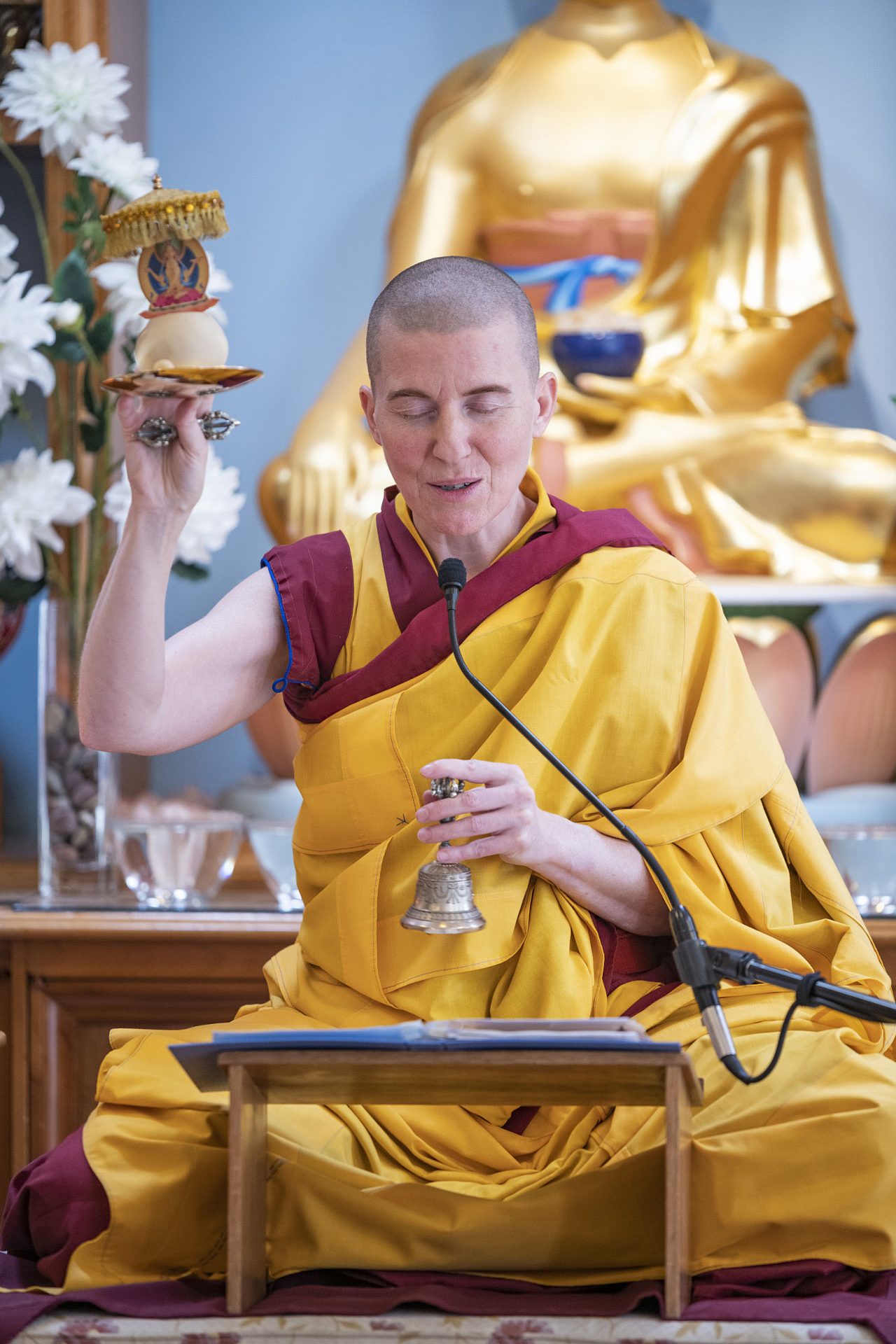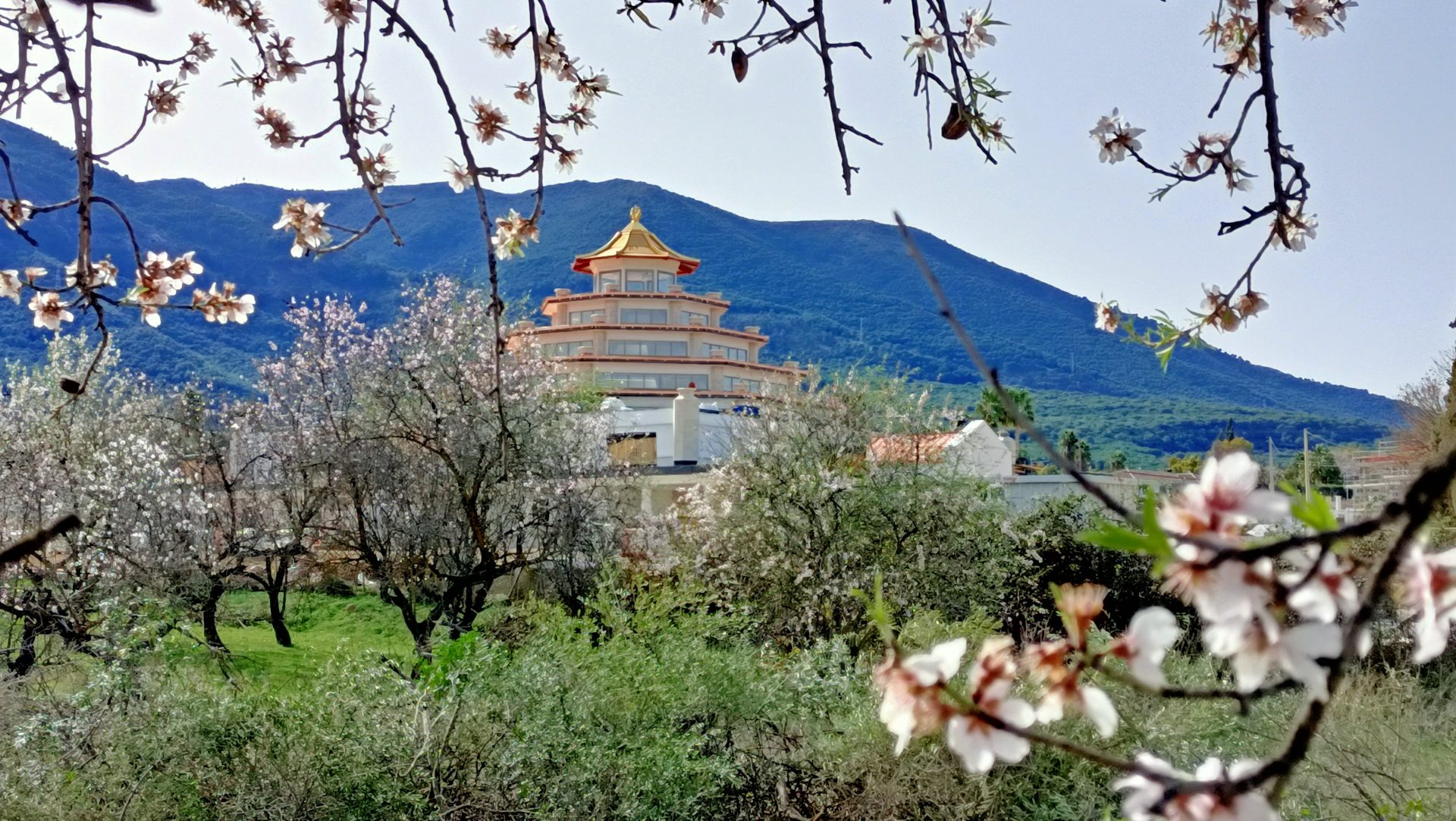Golden Threads
How we can tap into the goodness and compassion that are always available to us The post Golden Threads appeared first on Tricycle: The Buddhist Review.

Personal Reflections Life As It Is
How we can tap into the goodness and compassion that are always available to us
Susan Kaiser Greenland in conversation with James Shaheen and Sharon Salzberg Jul 22, 2024 Photo by Isak Engström
Photo by Isak EngströmEnlightenment can often sound like a lofty or unattainable goal. But mindfulness teacher and author Susan Kaiser Greenland believes that we can find enlightenment in every moment. In her new book, Real-World Enlightenment: Discovering Ordinary Magic in Everyday Life, she draws from a variety of wisdom traditions to lay out practical tools for easing anxiety and tapping into our innate goodness.
In a recent episode of Life As It Is, Tricycle’s editor-in-chief, James Shaheen, and meditation teacher Sharon Salzberg sat down with Kaiser Greenland to discuss why she believes that we already have what we need to be free, the power of getting out of our own way, and how we can learn to take ourselves less seriously.
JS: You say that enlightenment can sometimes sound unattainable, and you describe real-world enlightenment as an experience we can all tap into in everyday life. So what do you mean by real-world enlightenment?
SKG: I think everybody’s experienced what I’m calling real-world enlightenment, which are those glimpses when your ego drops and you just connect to one of these qualities that are with us all the time, whether it’s awareness, love, compassion, or wisdom. Everything drops away, and all of a sudden, you feel part of something much greater than yourself. It’s not a conceptual experience; you really just feel it. Without training, it’s something that usually comes as a surprise, but with training and practice and motivation, we can really nurture our ability to drop into those moments more frequently.
SS: You structure the book around what you call golden threads, or universal themes across wisdom traditions that lead to psychological and emotional freedom. Could you say more about these golden threads?
SKG: The golden threads are a nod to an educational psychologist named Jerome Bruner, who talked about golden threads being woven into curriculum. I just loved that term because when I was working in schools and working with parents, what would come up were these universal themes that were common across all sorts of wisdom traditions—things like kindness and patience and how everything is connected and and how everything is made up of multiple changing interdependent elements.
I love the idea of golden threads because they’re woven in everywhere. If we know that these threads are everywhere, we know that we can tap into them, even in a chaotic moment. And that’s the goal with real-world enlightenment: even when we’re feeling very chaotic, we have some mindfulness-based strategies to help us settle our nervous system and ground us, and we can go deeper in an instant by tapping into these themes.
SS: You say that one of the most fundamental principles across wisdom traditions is that goodness is within everyone, and within Mahayana Buddhism, this goodness is considered the source of enlightenment. So how can we build our own capacity to recognize and embody the essential goodness within ourselves?
SKG: Goodness is available to us, whether it’s here from the very beginning or whether there are seeds of goodness that we can nurture and cultivate. The idea of getting out of our own way to be able to tap into the goodness or to see the goodness in others is an essential part of my experience of Buddhist practice. The idea is to see that goodness even in acts that may not look that good on the surface. But if you dig a little bit deeper, you see that it is often coming out of a sense of love and compassion in trying to ease suffering, even if the action isn’t skillful.
“We tend to get in our own way in finding freedom.”
The second approach that I think is important to remember is nervous system regulation. It’s really tough to get out of your own way if your nervous system is ratcheted up. By becoming aware of that activation and using mindfulness-based strategies to help ground ourselves and undercut that fight-or-flight response, then we can have more spaciousness, and we can start to actually drop into the goodness, the joy, the love, and the compassion that are always here.
SS: You also say that we have what we need to be free. What do you mean by that?
SKG: What we need to be free are these qualities that are inside all of us. We tend to get in our own way in finding freedom. Speaking for myself, I’ve suffered from anxiety my whole life, so the anxiety gets in my way and limits my freedom. Although I think I’m helping myself, I’m not necessarily actually [doing so]. All that we need to be free as far as psychological freedom is to be able to tap into these inner qualities of attention, balance, compassion, love, and playfulness. This allows us to be free from our own emotional baggage.
JS: One of the themes you explore is renunciation, and you say that it’s the first step toward freedom from suffering. So how do you understand renunciation, and what does it look like for a layperson?
SKG: Renunciation sounds like you’re giving something up. Who wants to give something up? But renunciation is actually one of the greatest forms of relief that I’ve experienced in my practice. This is one of Mingyur Rinpoche‘s teachings that I really appreciate. It’s the idea of letting go without giving up. This allows us to be much more open to experience so that we can start to see experience in a different way than when we limit our perception by an expectation for outcome.
There are all sorts of other kinds of renunciation, too. One of the beauties of getting older is we all learn [renunciation], for better or worse. With a decrease in energy, there are some things we have to let go of and drop that we may not have wanted to drop before. The effect of that letting go, at least for me, has been enormous relief. It’s hard to do because it is contrary to our habitual patterns, but if you can undermine or uproot those patterns, or if life puts you in a situation where you have to let go, you can sometimes see the benefit.
JS: You say that one of the Tibetan terms for renunciation, nge jung, can be translated as the determination to be free. Can you say more about this term? What is it that we are determined to be free of?
SKG: Well, I think what we’re determined to be free of are these habitual patterns that get in the way of our seeing things as they really are and seeing the world as a much vaster, much more interconnected, much more constantly changing, much more mysterious, and much more joyful place than we sometimes see things.
Our perspectives are so narrow, even under the best of circumstances. I mean, if we look at what dogs and cats and bats and dolphins can pick up in our environment that we completely miss, it leads to a sense of humility about what we can perceive or pick up with our all-too-limited human perceptions. The idea is that we’re determined to be free of whatever it is inside us that makes us so absolutely certain about things. We’re determined to be free of a limited perspective so that we can break open our perspective and start to see things a little bit differently.
This excerpt has been edited for length and clarity.
![]()
Thank you for subscribing to Tricycle! As a nonprofit, we depend on readers like you to keep Buddhist teachings and practices widely available.
This article is only for Subscribers!
Subscribe now to read this article and get immediate access to everything else.
Already a subscriber? Log in.

 UsenB
UsenB 































